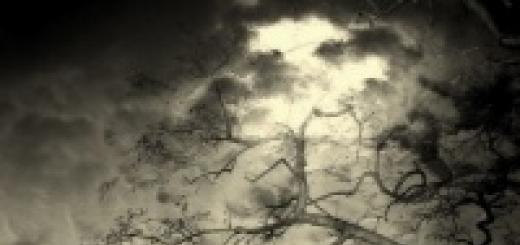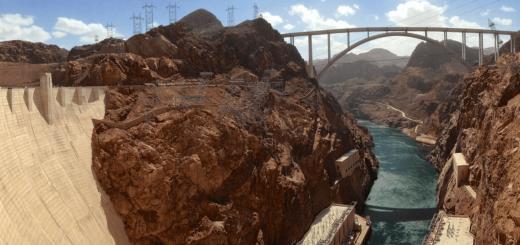The theme of “Evening reflection on the Majesty of God on occasion, the great northern lights” can be defined as an enthusiastic admiration for the power of the Creator, who managed to create thousands of inhabited worlds, create a space so boundless and saturate it with such inexhaustible riddles that the mind refuses to perceive and accommodate such diversity .
So, the meaning of the lines “The abyss has opened, the stars are full; // There is no number of stars, the abyss is the bottom ”is that with a little observation, you can pay attention to the inexhaustibility of the world, evidence of which is very close. The universe then appears so boundless and incomprehensible in its complexity that it can only be compared to an abyss filled with countless stars. The very thought of this excites the mind and imagination, causes involuntary reflections on the extraordinary complexity of God's creation.
Nevertheless, the main idea of the work is that reason is given to man for this, so that he can comprehend the laws of the world, learn to ask “nature” questions, seek and find answers to them.
The theme “Ode on the day of accession to the All-Russian throne of Her Majesty Empress Elisaveta Petrovna in 1747” can be defined as the exaltation of the transformations of Peter I, the assertion of the national self-sufficiency and originality of the Russian state, the vast natural wealth of the country and the great abilities of the Russian people.
The twenty-year reign of Elizabeth Petrovna began in November 1741. The ode was written for the sixth anniversary of the reign of Peter's daughter, for six years the main tendencies of the reign of Elizabeth had already appeared, and it was possible to draw intermediate results.
The main merit of Elizabeth Lomonosov considers the establishment of "beloved silence", which gives peace to the "Russians" and which does not need "blood current" (Elizabeth did not wage wars in the first 15 years of her reign).
The second merit is the return to the policy of Peter (the powers of the Senate were restored, the boards were recreated, the Cabinet of Ministers created by Anna Ioannovna was liquidated): “... When from a joyful change / Petrovs raised walls / Splashing and clicking to the stars!” The same idea is emphasized by the extensive glorification of Peter's deeds and summary: "... The great Peter's daughter / Father's generosity exceeds, / The contentment of the muses aggravates / And fortunately opens the door."
The third merit is the patronage of the sciences: "...Here in the world to expand the sciences / Elizabeth deigned." In fact, Elizabeth paid little attention to the sciences. But her favorite was I. I. Shuvalov, a well-known patron of sciences and arts, who was friends with Lomonosov, corresponded with Voltaire and Helvetius, who contributed to the opening of Moscow University and the Academy of Arts.
The most important achievement of Lomonosov is that he not only praised Elizabeth, but taught her what she should do as an empress: if the Almighty entrusted such “land space” to “happy citizenship” and opened treasures, then you need to know that
.. .requires that Russia
The art of approved hands.
This gold will cleanse the vein;
Stones will also feel the power
the sciences restored by you.
The poet's right to teach kings manifested itself in the same century in the work of Derzhavin.
EVENING (SHIFT) SCHOOL
EVENING MEDITATION ON THE MAJESTY OF GOD IN THE EVENT OF THE GREAT NORTHERN LIGHTS
Teacher
Russian language and literature
Kurtveysova E.N.
Physics teacher
Glushchenko V.S.
INTEGRATED LESSON OF LITERATURE AND PHYSICS
Topic: " Evening meditation on the Majesty of God at the occasion of the great northern lights. (Slide #1)
Goals: ( slide number 2)
educational: give an idea of the personality of M.V. Lomonosov; formation of a system of knowledge about the surrounding world through the integration of academic disciplines;
developing : development of logical thinking, the skill of a coherent statement, analysis of the work;
educational: education of cognitive interest in the study of literature, physics, natural phenomena.
Equipment: portrait of M.V. Lomonosov; handout (the text of the ode by M.V. Lomonosov “Evening meditation on the Majesty of God in the event of the great northern lights”); video slide, ode performed by Dmitry Pisarenko; computer presentation.
Decoration on the board: portrait of M.V. Lomonosov; epigraph; outdated words.
During the classes
Organizing time.
Setting lesson goals. Motivation of educational activity.
Updating knowledge and posing a problematic issue.
Learning new material.
The answer to the problematic question of the lesson. Consolidation.
Literature teacher: Today we are conducting an integrated lesson together with a physics teacher. The topic of today's lesson is "Evening reflection on the Majesty of God in the event of the great northern lights." The epigraph of our lesson is the words:
Everywhere explore (sya) in part
What is great and beautiful.
M.V. Lomonosov
Among the glorious names of the past of Russian science, there is one especially close and dear to us - the name of Mikhail Vasilyevich Lomonosov. MV Lomonosov became a living embodiment of Russian science and culture with its diversity and peculiarities, with its richness and breadth.
He was a naturalist, philosopher, poet, founder of the Russian literary language, historian, geographer, politician, and in every field this outstanding person achieved great success, often ahead of his time. Today at the lesson we will get acquainted with his work "Evening reflection on the Majesty of God in the event of the great northern lights."
And now let us recall the main dates of the life of M.V. Lomonosov.
Pupil:(Biography of M.V. Lomonosov) (Slide No. 3).
Brief chronology - Mikhail Vasilyevich Lomonosov
1711 - was born into a Pomor family in the Arkhangelsk province. 1730 - at the age of 19 he went on foot to Moscow to study. 1731 - 1735 - studies at the Moscow Slavic-Greek-Latin Academy. 1736 - On October 4, he was sent to Germany to study mining and metallurgy. 1736 - 1739 - studied at the University of Marburg. 1741 - June 8 returned to St. Petersburg. 1745 - On July 25, he was appointed professor of chemistry at the Academy of Sciences and Arts. 1746 - On June 20, he gives public lectures on physics in Russian for the first time. 1755 - Moscow University was established according to the project of M.V. Lomonosov. 1764 - On April 17, he was elected an honorary member of the Academy of Sciences of the Bologna Institute. 1765 - On April 4, he died of pneumonia in his own house on the Moika River. 1765 - On April 8, he was buried at the Lazarevsky cemetery of the Alexander Nevsky Lavra.
Literature teacher: And now, guys, open your notebooks and write down the date and the topic of today's lesson. Now we will reflect on the content of the ode "Evening reflection on the Majesty of God at the occasion of the great northern lights." In addition to the fact that today we will get acquainted with the poetic features of the ode, we will answer the questions: “Does modern science confirm the theory of M.V. Lomonosov about the northern lights?” What is this ode about?
So, “Evening meditation on the Majesty of God in the event of the great northern lights” (distribute the text of the ode).
But first, let's repeat: (student answers)
What is an ode?
Oh yeah- a solemn poem dedicated to some historical event or hero.
The founder of what three calms is M.V. Lomonosov?
Lomonosov developed the theory three calms in relation to the Russian language. High style had to be written - odes, heroic poems; medium- friendly letters, satires; low- comedies, songs, epigrams.
And now let's listen to the ode performed by Dmitry Pisarenko.
Let's turn to the text with the ode (Slide number 4). Analysis of the ode.
Pay attention to obsolete words:
Pomor- a resident of the coast (Arkhangelsk Pomors); flash- the common name for the northern lights; abyss- sky; vortex- wind; this- this is; sweep- throw, entangle, subjugate; cold- cold; ghost- image, appearance; kneads- sweeps; zyblet- swaying; frozen- frozen; tops- top; ether- air; marshmallow- wind; around around, about.
Guys, look carefully how many parts this work consists of? (8 stanzas). And in each part the poet expressed his thought. Let's think about it, let's think about it.
When reading, one should pay attention to the stress of Lomonosov's verse.
When reading Lomonosov, one should be extremely accurate in orthoepy: face - not face; stars - not stars; deepened - not deepened; mint - rhymes with the word planets.
Pay attention to the phonetic originality of poetry. Guys, if we do not observe the phonetic originality of the poetry of the 18th century, then we will distort the sound style of M.V. Lomonosov.
Let's write down features of 18th century poetry: high, odic style; metaphorical language; archaisms.
What does Lomonosov talk about in the 1st stanza of the ode? About the Universe. The universe seems to be infinite, eternally alive, never disappearing anywhere. We saw that there is no chaos and disorder in the structure of the Universe, after the day comes the night, after the night the sun rises and the morning comes (that is, each phenomenon, object has its own place). The universe itself opened before man in the form of an abyss full of stars.
2nd stanza: and in front of the opened abyss, a person begins to feel like a grain of sand in this Universe. He also calls himself a small spark in eternal ice, thin dust in a strong whirlwind, a feather in a fierce fire. Deepening into the abyss, the poet himself is lost, tired of his thoughts.
3rd stanza: the author addresses the wise, who know what is in this abyss that “swallowed” him. The wise say that there are many other lights, where the suns burn and different peoples live. Lomonosov's poetic thought turned not only to the urgent matters of science, but also to the mysteries of the many worlds that fill the Universe. All planets are illuminated by the sun. The world can be known! And in order to reveal its secrets, a person must resort to the sciences.
Whom does Lomonosov address in the 4th stanza of the ode? (nature - nature). The human mind needs to get an answer to the question: “But where, nature, is your law?”.
To whom is the question addressed in the 5th stanza? To a person who is given the mind to comprehend these laws of the world, I want to solve the riddle northern lights. The person himself cannot find a solution, therefore he turns to those who know all the secrets of nature, and reveals his doubts to them: “Tell me, what is it that worries us so much? (depressing)."
And not having received an answer, the person simply showers them with a hail of questions (6th stanza). The poet tries to understand the origin of various natural phenomena. The author admires and admires the majestic beauty of the northern lights.
Again follows a series of questions about the structure of the universe (8th stanza). And what about the stars? The universe is big, not small, and life is never-ending.
What literary means does the author use?(student answers)
Comparisons- a grain of sand, a small spark, a feather.
epithets(artistic definition) - a clear beam, menacing clouds, greasy haze.
Metaphors(a word or expression in a figurative sense) - the day hides its face, the fields are covered with night, a shadow has risen, a ray is shaking, a thin flame strikes the firmament, frozen steam, the tops are burning.
Lexical repetitions- how how; there, there; se, se; I'm sorry, what; how how; il, il, il; tell me, tell me
Text synonyms(to the word "radiance") = beam, flame, lightning, fire.
Root words- great - majesty.
Syntactic constructions(interrogative appeals) - But where, nature, is your law? Tell me what's bothering us so much? Tell me, how vast is the light? Tell me, how great is the Creator?
genre of ode- reflection.
Ode theme- about God's Majesty.
Expressively read the poetic description of the northern lights:
What does the ray of clear night vibrate? What thin flame strikes into the firmament? Like lightning without menacing clouds Strives from the earth to the zenith? How can it be that frozen steam in the middle of winter gives rise to a fire?
Based on the title of the work, name the signs of the northern lights:
Evening - happens in the evening and at night; Reflection - encourages reflection on the cause of radiance; About God's Majesty - this is an assumption about the unearthly nature of radiance, God's providence; On occasion - the phenomenon is not predictable, it does not happen often; Great is a unique, unusual phenomenon; Northern Lights - happens in the North.
Literature teacher : Ode by M.V. Lomonosov “Evening reflection on the Majesty of God in the case of the great northern lights” - is a reflection on the possibilities of knowing the Universe. The origin of the northern lights is a mystery of nature. According to Lomonosov, in order to benefit one's country, one must be not only a hardworking, but also an enlightened person.
M.V. Lomonosov wrote not only an ode to the northern lights, but also a scientific work - “A word about aerial phenomena, occurring from electric power” (1753).
Lomonosov described the northern lights not only in poetic language, but also in scientific language.
Physics teacher: Modern interpretation of the theory of the origin of the northern lights. Our globe is a big magnet. Like a normal magnet, there is a magnetic field around the Earth.
When explosions occur on the Sun, "into the upper part of the Earth's atmosphere - the ionosphere - streams of charged particles flying at great speed - protons to electrons - the so-called solar wind, rush from the Sun.
Invading the Earth's atmosphere, solar wind particles are guided by the Earth's magnetic field.
Colliding with the atoms and molecules of atmospheric air, they ionize them, resulting in a glow, which is the aurora.
The glow of rarefied gases occurs in the upper part of the atmosphere - the ionosphere.
In this way, Northern Lights- glow of the upper layers of the earth's atmosphere due to their interaction with charged particles of the solar wind. (Slide number 5).
Task for the development of logical thinking
-
What assumptions of M.V. Lomonosov found confirmation in modern science?
The provisions of Lomonosov, which have stood the test of time (slide 6): the cause of the auroras are electrical discharges occurring in rarefied layers of air; auroras occur at very high altitudes.
Explaining the nature of the northern lights, Lomonosov could not answer the question, what kind of electrical particles cause a grand airglow in its upper, rarefied layers? This became possible thanks to the development of physics and advances in space research.
Conclusion : Although M.V. Lomonosov failed to establish the nature of the aurora, he nevertheless came quite close to understanding it.
Does modern science confirm the scientific hypothesis of M.V. Lomonosov about the northern lights?
What is Northern Lights?
In what works of M.V. Lomonosov revealed the nature of the northern lights?
What is another name for the northern lights?
Summing up, grading.
Homework . Using the material from the lesson, write an essay about the northern lights.
M.V. Lomonosov "Evening meditation on the Majesty of God on occasion" Great Northern Lights"
The purpose of the lesson. Spiritual and moral education of students through the word.
Tasks.
Educational : to acquaint students with the poetry of the era of classicism, with the genre features of the ode; prepare students for the perception and analysis of the ode "Evening meditation on the majesty of God ..."
Educational: to form in students moral qualities, the ability to express their moral position.
Developing: develop students' oral speech, logical and figurative thinking.
During the classes.
Teacher's word. AT Russian literatureXVIIIcentury there is a name known to all our compatriots without exception - Mikhail Vasilyevich Lomonosov. He is worthy of respect both as a scientist and as a person who has reached the heights of education and fame from the very bottom of society, and as a poet. The theory of "three calms" of Lomonosov was important for the development of Russian literature: it marked the beginning of the formation of the national Russian language. This theory was associated with the main requirement of classicism - a strict division of genres into high, medium and low. Lomonosov solved an important problem: he brought together book speech and colloquial speech.
As a poet, Mikhail Vasilievich created works of all three styles, but his odes played a particularly important role in literature.
Define ode.
(Ode is a solemn work that glorifies the most important events of the external and internal life of the state. The style of the ode is high. The ode consists of three parts: introduction, reasoning, conclusion, which brings the classical ode closer to oratory).
Expressive reading of the ode "Evening meditation on the majesty of God."
Interview with students.
Teacher. Reread the ode, examine its individual parts and answer the questions: does the ode “Evening Reflection on the Majesty of God” meet the requirements of classicism?
With what picture does Lomonosov begin his ode?
What is the role of the landscape in the ode?
What does the poet admire: the beauty of nature or the benefits it brings?
What kind of landscape does Lomonosov draw - specific or generalized (large-scale)?
How does Lomonosov's adherence to classicism manifest itself in the depiction of the landscape?
Answer. The poet depicted a large-scale and generalized landscape. In the ode, Lomonosov not so much admires the beauty of nature as this landscape is interesting to him as a means of revealing the main idea. The reproduction of specific pictures of nature was not part of the tasks of the classicist poet, since excessive detail would interfere with a clear presentation of the main idea of the ode.
Teacher. What are the main means of expression used by the author in this picture?
Answer: The main artistic means of the image is the personification:
Teacher. To what main idea does the poet bring in the first part of the ode? How do artistic means and techniques help the poet to reveal it?
Answer. Lomonosov, drawing pictures of the secrets of nature, was sure that they were the secrets of God, which it was impossible for the human mind to fully reveal. It was necessary for Mikhail Vasilyevich to use personification when depicting nature in order to convey to the reader the idea that nature is an animated manifestation of God's power.
Teacher. What stanza does the second part of the ode begin with?
Answer. From the third stanza.
Teacher. AT ode "Evening Reflection ..." we immediately feel the mighty spirit of the author-scientist. He turns to scientists, arguing with them, and he himself is looking for answers to endless questions:
What does the meadow vibrate on a clear night?
What thin flame strikes into the firmament?
Like lightning without menacing clouds
Strives from the earth to the zenith?
How can it be that the frozen steam
Was there a fire in the middle of winter?
The last two lines of this stanza refer toX. Wolf, who considered the cause of northern sowing to be “fine vapors” formed in the bowels of the earth. It is with Wolf's theory of "fine evaporation" that Lomonosov is arguing in this stanza.
And in the next stanza, Mikhail Vasilyevich talks about another hypothesis, according to which the northern lights are a reflection of the fire of the Icelandic volcano Hekla in the northern moving ice:
Or the tops of fat mountains are burning,
Or the marshmallow stopped blowing into the sea,
And smooth waves beat into the air ...
These lines already set out Lomonosov's own theory, which pointed to the electrical nature of the northern lights.
A magnificent picture of the northern lights is given - a phenomenon that the poet remembered from childhood: it is a kind of symbol of his native North. But it is also a picture of creative consciousness, insatiable curiosity. Offers, included in these stanzas are interrogative reasoning. But there are no answers to these questions - there are only suggestions and doubts. But they are inherent in a person, a true scientist, who questions many things, puts forward his conjectures and assumptions. So, the ode "Evening reflection ..." ends with questions that lead from the northern lights to the secrets of the universe:
Tell me, how vast is the light?
And what about the smallest distant stars?
Do you know the end of the creatures?
Tell me, how great is the Creator?
In science, the poet saw an assistant and ally of theology in the knowledge of God's wisdom.
And what is the difference between an ode and an oratorical speech, because both of them are similar in composition, logical presentation, style?
Answer. The ode expresses the lyrical feelings of the hero.
Teacher. How do you define the feelings of a lyrical hero?
Answer. These are feelings of delight, firstly, before God's majesty and, secondly, the lyrical hero admires the beauty of nature, in which he sees an animated manifestation of God's power. And although the author uses the pronoun “I” in the ode, he conveys only those experiences that could arouse general interest.
Teacher. With the help of what artistic means, stylistic devices does the author manage to convey the state of delight of the lyrical hero?
Answer. AT describing the landscape, the author uses a large number of epithets: a black shadow, a clear beam, frozen steam, a thin flame, rhetorical questions and exclamations.
Teacher. So the poet is describing nature?
Answer. No, the poet does not describe, but enumerates natural phenomena: the onset of evening, the northern lights. But Lomonosov names individual elements of the landscape, and the artistic means and techniques he uses do not characterize nature. at the moment of description, but recreate the image of ideal nature, in which Divine greatness is manifested.
Teacher . So, we see that the lyrical content occupies an important place in the ode. The main thing in the poem is the personality of the poet with his philosophical reflections, reflections on the essence of being. The addressee of his ode, the Creator, stands at an unattainable height, which is emphasized by the solemnity, sublimity of the sound of the poem. And with the help of what is the high style of the ode created?
Answer. The high style of the ode is created by the abundant use of old Slavic words: they say, they sweep, fire, the specter, ziblet, firmament, marshmallow - the god of light breezes, the unknown ...
Teacher. What is the meter of this poem?
Answer. The author uses iambic tetrameter, which was considered the most appropriate for a classic ode.
Teacher. AT than the value of M.V. Lomonosov? To answer this question, let us turn to the statements of the people of the next generation. A.S. Pushkin in the article “On the preface of Mr. Lemonte to the translation of the fables of I.A. Krylov" writes about Mikhail Vasilievich as follows: "His style is even, flourishing and picturesque, borrows the main advantage from a deep knowledge of the bookish Slavic language and from its happy merging with the language of the common people.
That is why the transcriptions of the Psalms and other strong and close imitations of the high poetry of the sacred books are the best of his works. They will remain eternal monuments of Russian literature...” A.P. Vyazemsky said that "Lomonosov in his good stanzas floats like a swan," but he "is more of an orator in his verses."
We, modern readers, are primarily interested in Lomonosov as a poet, reformer of the Russian language and poetic style, one of the founders of classicism. His merit to the Fatherland and Russian culture is great.
Homework. Written analysis of M.V. Lomonosov's ode "Morning Reflection on the Majesty of God" (1751).
The combination in one person of a poet and a scientist is noticeable in his poems "Morning" (see its full text and analysis) and "Evening reflection on the Majesty of God" (see its full text and analysis). They are among his spiritual odes.
Lomonosov. Evening meditation on the majesty of God at the occasion of the great northern lights. Reading an ode
"Reflections" of Lomonosov - and this is perhaps the most surprising - belong to the number of his early works. They were written in 1743, four years after "Ode on the Capture of Khotin", which Lomonosov made his debut in the poetic field. By this time, he had only five odes and an arrangement of the 143rd psalm in his asset. Neither individually nor all together did they seem to predict the grandiose ideas and brilliant lapidarity of the Meditations. Meanwhile, it turns out that Lomonosov set out in them his well-established scientific views, which to this day amaze with the depth of insight and the courage of the flight of thought.
"God's Majesty", put in the title of the poems, is for Lomonosov a synonym for the immensity of nature, the greatness of the material and spiritual world. Lomonosov talks like a natural scientist, but talks about the results of his observations in the language of a poet. He persistently desires to solve the mysteries of the cosmos, still inaccessible to experimental knowledge, and puts forward scientific hypotheses in these verses, which he will later refer to in scientific works.
In the "Sermon on the Phenomena of the Air" Lomonosov remarks: " Franklinov guess about the northern lights from my theory is very different. This word of mine was almost ready when I heard about Franklin's guess. In addition to this, my ode to the northern lights, which was composed in 1743 and published in the Rhetoric in 1747, contains my long-standing opinion that the northern lights can be produced by the movement of the ether.
The northern lights occupied Lomonosov all his life. They struck his imagination in early youth, and, becoming a scientist, he began to study them, wanting to understand the nature of this extraordinary enchanting phenomenon. Lomonosov sketched the auroras that he managed to observe in St. Petersburg, and these drawings have been preserved.
Lomonosov. Morning reflection on God's majesty. Reading an ode
In 1753, he suggested the electrical nature of the northern lights, and in the last years of his life he began to write a major work, in three volumes, "Testing the Cause of the Northern Lights and Similar Phenomena." It remained unfinished.
Integrated lesson of literature and physics in grade 9
Analysis of the ode by M.V. Lomonosov "Evening meditation on the Majesty of God in the event of the great northern lights"
Poleshchenko Olga Nikolaevna, teacher of Russian language and literature
Municipal Budgetary Educational Institution "Musical and Aesthetic Lyceum named after A.G. Schnittke"
Target: formation of a system of knowledge about the world through the integration of academic disciplines.
Tasks:
1. To acquaint with the work of M.V. Lomonosov as a reformer of the Russian literary language and versification, to determine the pathos of the poem "Evening reflection on God's greatness in the event of the northern lights."
2 . Develop the skills of analyzing a lyrical text through a variety of ways to comprehend a poetic work, its ideological and artistic meaning, develop creative thinking, attention, and improve the skills of monologue speech.
3 . Raise interest in the study of the lives of people who have contributed to the development of science, pride in the achievements of compatriots.
Equipment:
- Multimedia projector, presentations
- The text of the ode to M.V. Lomonosov "Evening reflection on the Majesty of God in the case of the great northern lights."
- Textbook. Literature. Grade 9 Textbook for educational institutions. In two parts. Part 1, ed. Korovina V.Ya. - M., "Enlightenment", 2012
Methods and techniques:
verbal (conversation, story),
visual and illustrative (demonstration),
use of ICT (presentation, slide show).
During the classes
- Greeting, checking absentees, creating a favorable mood.
II. Updating knowledge and posing a problematic issue.
Physics teacher : Today we turn to the scientific and creative heritage of Mikhail Vasilyevich Lomonosov, a Russian poet and an outstanding scientist.
He studied many sciences and made amazing discoveries, far ahead of his time. M.V. Lomonosov was engaged in research in the field of mathematics, physics, astronomy, geography, geology, biology, linguistics, philosophy, history.
Literature teacher: For a scientist, there were no boundaries between science and art: M.V. Lomonosov comprehended the world through the prism of science, trying to understand how everything in the world is interconnected, and described it in wonderful odes. The result was the formation and emergence of new sciences, the discovery of many fundamental laws and the reform of the Russian language and versification.
Physics teacher : - Please, give examples of scientific discoveries of MV Lomonosov in chemistry, physics. How did this affect the further development of science?
- The stage of obtaining and assimilation of new knowledge and methods of action
- Individual reports of students "Lomonosov - a chemist", "Discoveries of M.V. Lomonosov in the field of physics, astronomy,
- Recording in notebooks of information received in the course of communications. Filling in the table.
The discoveries of M.V. Lomonosov
The science | Achievements and discoveries |
Chemistry | Favorite science. 1748: opened the first chemical laboratory in Russia. He compiled a recipe for the preparation of porcelain masses, and smalt, which he used for his mosaics of 1751. Developed the principles of a new science -physical chemistry. "A word about the benefits of Chemistry" Lomonosov. |
Geography | Compiled the "Polar Map"; developed instruments for marine navigation; instruments for maritime navigation. Proved the existence of a continent at the South Pole (Antarctica); possibility of the Northern Sea Route to India. |
Geology | He was the first in Russia to pay attention to the history of the Earth itself and to the reasons for the formation of minerals. M.V. Lomonosov compiled a catalog of Russian minerals. Metallurgist, geologist |
Astronomy | He improved the spyglass, which he called the "night-sighting" device "for thickening the light." Created a new type of reflecting telescope-reflector. Discovered the atmosphere on Venus. |
Physics | Discovered the law of conservation of matter. He was the first to formulate the main provisions of the kinetic theory of gases, the discovery of which is often associated with the name of D. Bernoulli. Designed a thermometer.He made a guess about vertical currents in the atmosphere, correctly on the electrical nature of the northern lights and estimated their height. He developed an ethereal theory of electrical phenomena, thought about the connection between electricity and light, which he wanted to discover experimentally. Supported the wave theory of Huygens and developed the original theory of colors. |
Russian language and literature | Developed the rules of the Russian language, compiled the "Russian Grammar". He developed the theory of "three calms". In 1751, the "Collection of various works in verse and prose by Mikhail Lomonosov" was published. |
Painting, mosaic | Discovered the secret of making smalt. Opened a mosaic workshop. Made 40 mosaic paintings. Elected an honorary member of the St. Petersburg Academy of Arts |
Conclusions:
M.V. Lomonosov was an outstanding scientist of encyclopedic knowledge. It is no coincidence that A.S. Pushkin called it "the first Russian university". He did a lot for the development of science in Russia. It was on the initiative of Lomonosov and according to his project that Moscow University was founded in 1755, "open to all persons capable of science", and not only to the nobles.
III. Stage of assimilation of new knowledge and methods of action
- The study of the material “M.V. Lomonosov is a reformer of the Russian literary language.
Work with the textbook. "Literature. Grade 9 Textbook for educational institutions. In two parts. Part 1, ed. Korovina V.Ya." - M., "Enlightenment", 2012 - S. 43-44
- Filling out the table in notebooks
"Theory of the "Three Calms"
"Calm" | Vocabulary | Genres |
"High" | Church Slavonic words and Russian | Heroic poems, odes, tragedies, laudatory inscriptions |
"Average" | Russian words with a small admixture of Church Slavonic | Dramas, satires, eclogues, idylls, epistles, friendly letters, elegies |
"Short" | Russian words of the spoken language with the addition of vernacular. A small number of Church Slavonic words | Comedies, epigrams, fables, songs |
- Analysis of the ode by M.V. Lomonosov "Evening meditation on the Majesty of God in the event of the great northern lights."
1. Literature teacher: "Morning reflection on the Majesty of God", dedicated to the description of the Sun and the solar atmosphere, and "Evening reflection on the Majesty of God in the event of the great northern lights" are part of a single plan. Lomonosov himself dates "Evening Reflection ..." to 1743. The beginning of his observations of the northern lights dates back to the same time. As a scientist, he is trying to find an explanation for one of the most beautiful natural phenomena.
2. Physics teacher's explanation"Modern interpretation of the theory of the origin of the northern lights".(Slide 20)
Mikhail Lomonosov, after conducting countless experiments, suggested the electrical nature of this phenomenon.(Slide 21)
Our globe is a huge magnet. Around it, like around a regular magnet, there is a magnetic field. When explosions occur on the Sun, streams of charged particles flying at great speed rush from the Sun into the upper part of the earth's atmosphere - the ionosphere. These are protons and electrons that form the so-called solar wind.(Slide 22)
Invading the Earth's atmosphere, solar wind particles are guided by the Earth's magnetic field.(Slide 23)
Colliding with the atoms and molecules of atmospheric air, they ionize them, as a result of which a glow arises, which we see and perceive as the aurora. ( slide 24)
The glow of rarefied gases occurs in the ionosphere, that is, in the upper part of the atmosphere.(Slide 25)
This means that the northern (polar) lights are the glow of the upper layers of the Earth's atmosphere, which arises as a result of their interaction with charged particles of the solar wind. ( slide 26)
3. Literature teacher: In 1753, Lomonosov, in the "Explanations" attached to the "Word about the phenomena occurring from the electric force", reported:“My ode to the northern lights, which was composed in 1743 and published in 1747, contains my long-standing opinion that the northern lights can be produced by the movement of the ether.”(PSS, vol. 3, p. 123).
In this ode to M.V. Lomonosov is an experiment in the poetic design of a very specific natural science theme. This is a kind of literary experiment, since the ode belongs to the so-called "physical-theological" tradition, which saw in various natural phenomena the main proof of the existence of God.
4. An expressive reading of the ode by a previously prepared student or an audio recording of the reading of the ode “Evening reflection on the Majesty of God in the event of the great northern lights” by Boris Vetrov.Music by E. Artemyev for the film Solaris».
(Appendix. Presentation 2)
5. Analysis of the ode.
Text from the textbook "Literature. Grade 9 Textbook for educational institutions. In two parts. Part 1, ed. Korovina V.Ya." - M., "Enlightenment", 2012 - S. 50-51
5.1. Conversation on:
What is your impression after reading the text? Why?
Did the musical accompaniment and visuals affect the perception of the work?
What is the composition of the ode?
At the beginning of the ode to M.V. Lomonosov depicts phenomena familiar to a person from his daily impressions: late evening, twilight, nightfall. He goes on to speak of the astonishment that grips a person looking at the endless starry sky and the magnificent northern lights. Then the author lifts the veil over an invisible, hidden region of the universe, introducing the reader to new worlds unknown to him. The poet asks himself and his readers: who created a beautiful phenomenon that is beyond the control of the human mind, if not God.
Throughout the ode, he asks questions that are difficult to answer for an ordinary person who is unfamiliar with the principles of science.
What gives the text loftiness and solemnity? (Church Slavonic vocabulary, archaisms, obsolete grammatical forms).
Give examples. (Face - face, dark, stars, mala, deepened, tired, countless, tops and others; disagreement in Church Slavonic words: cold, ceased, and others).
Will the verse rhythm of the first line be broken if we replace the Old Slavonic expression “his face” with the Russian “his face”? What will change?(The rhythm is preserved, but solemnity will disappear).
What is the lexical meaning and what is the etymology of the noun " abyss"? What scientific knowledge does it reflect?(“Without a bottom.” Using the noun “abyss”, M.V. Lomonosov speaks of the boundlessness of the world: “The stars have no number, there is no abyss of the bottom.”
What feelings do we have at the sight of the starry sky? (Thinking about your insignificance in the vast world, thinking about your place in it.)
- As M.V. Lomonosov?(Numerous comparisons help to convey a sense of their insignificance and frailty:
A grain of sand, like in the waves of the sea,
How small is the spark in the eternal ice,
Like fine dust in a strong whirlwind,
In a fire as fierce as a feather,
So I, deepened in this abyss,
I'm lost, I'm tired of thoughts!)
- What prompted the poet to reflect on God's greatness?(Watching the Northern Lights).
How is this physical phenomenon described in the ode? (Students give examples)
5.2. Physics teacher:
In the next stanza, M.V. Lomonosov makes assumptions about the cause of the northern lights:
There argues oily haze with water;
Or the rays of the sun shine,
Leaning through the thick air towards us;
Or the tops of fat mountains are burning;
Or the marshmallow stopped blowing into the sea,
And smooth waves beat into the air.
According to ancient teachings, the entire world space is filled with a special environment - ether. And the Greek word marshmallow called a light breeze. The sea calmed down and the waves became "smooth" because the zephyr stopped blowing. Such waves "hit the ether" and cause it to glow. How does this compare with modern ideas about the nature of the northern lights?
Compare the scientific and poetic hypotheses of M.V. Lomonosov. (A hypothesis in poetic form about the origin of the northern lights “zephyr stopped blowing into the sea, and smooth waves beat into the ether” and the scientific hypothesis of M.V. Lomonosov are quite correlated: the scientist suggested that the cause of the auroras is electric discharges occurring in rarefied layers of air, and the nature of the aurora is the same as the glow of a gas discharge).
In scientific workLomonosov "Oratio de meteoris vi electrica ortis" - “The word about the phenomena of air, from the electric force occurring, proposed by Mikhail Lomonosov” we read: “The excited electric force in the ball, from which the air is drawn out, emits sudden rays, which disappear in the blink of an eye, and at the same time new ones on them places pop up, so that the uninterrupted brilliance seems to be. In the northern lights, flashes or rays have a similar appearance.
– What are the assumptions of M.V. Lomonosov found confirmation in modern science? (the auroras are caused by electrical discharges occurring in rarefied layers of air; auroras occur at very high altitudes).
Explaining the nature of the northern lights, Lomonosov could not answer the question of what kind of electrical particles cause a grandiose glow of the air in its upper, rarefied layers. This was made possible by the development of physics in the 20th century and advances in space research.
5.3 Literature teacher:
What is the main idea of the spiritual and philosophical ode "Evening meditation on the Majesty of God in the event of the great northern lights"? (Bowing before the power of the Creator, a person must comprehend the laws of the world, seek and find answers to questions about the meaning of life and the Divine plan. On this he was given the mind).
Faith in the human mind, the desire to know the "secrets of many worlds" is combined in a spiritual ode with admiration for the boundless creative power of the Creator, whose immeasurable greatness manifests itself in the structure of the world, pictures of the grandiose nature, its power and strength. Confirm this with the text of the ode.
(Tell me, how vast is the light?
And what about the smallest distant stars?
The ignorant creatures are the end of you?
Tell me, how great is the creator?
Oda M.V. Lomonosov strikes with the unwavering faith in the incomprehensible wisdom of the Creator, in the perfection of His creation, with a thirst for knowledge, creativity, and consciousness of the power of the human mind. The human mind, capable of embracing the Universe and finding its laws - “charters”, represents it as infinite, eternally alive, not disappearing anywhere. This is the greatness of God and the universe He created. But just as majestic is the human mind, aimed at studying the laws of the universe).
v. Systematization and generalization:
His extensive knowledge in the field of science M.V. Lomonosov made the subject of poetry. His poems are real poetry, born of inspiration, poetic delight from the possibility of knowing the world, comprehending the Divine secrets of nature. At the same time, they give a scientific explanation of natural phenomena. The language of these works is laconic and devoid of any kind of "decorations".
A.S. Pushkin considered the spiritual odes of M.V. Lomonosov's best works: “They will remain eternal monuments of Russian literature; for a long time we will have to learn our poetic language from them. And we can add, and abilitiesknowledge of the world, comprehension of its scientific laws
VI. Reflection.
What new did you learn in the lesson?
What else would you like to know?
What did you think about as you left the class?
VII. Homework:Textbook, pp. 51-58, expressive reading and analysis of the ode "On the day of the ascension ...", repeat by heart the passage "The sciences nourish young men."
An essay-reasoning on one of the topics: “The role of rhetorical questions in the ode “Evening reflection” or “The relevance of M.V. Lomonosov to the young in the ode "On the day of the ascension ...".
Sources
1. Zapadav A. Father of Russian poetry. - M., 1961
2. Lomonosov M. V. Poln. coll. cit.: In II vol. -M.; L. 1959
Internet resources:
Lomonosov Encyclopedia. http://feb-web.ru/feb/lomonos/
Library of classical music.http://music.lib.ru/b/boris_w/indexdate.shtml
Lomonosov M. "Evening reflection on God's majesty .."
Lomonosov's contribution to Russian literature.http://www.rosimperija.info/post/1592
Poems in voice. The art of artistic reading.http://www.stihophone.ru/works.php?G=9&ID=17951










